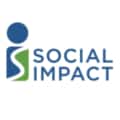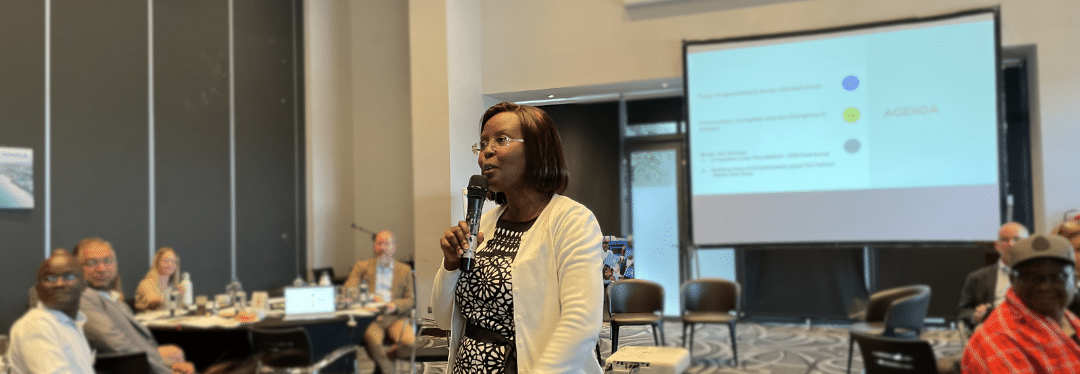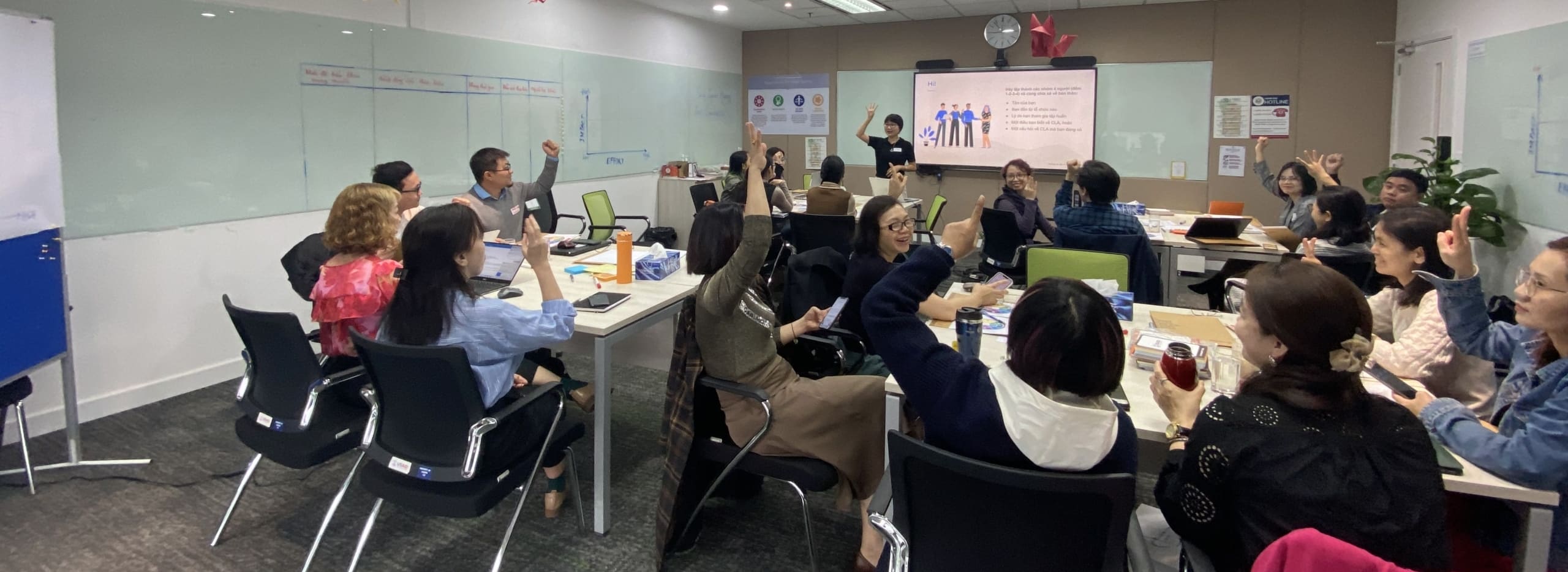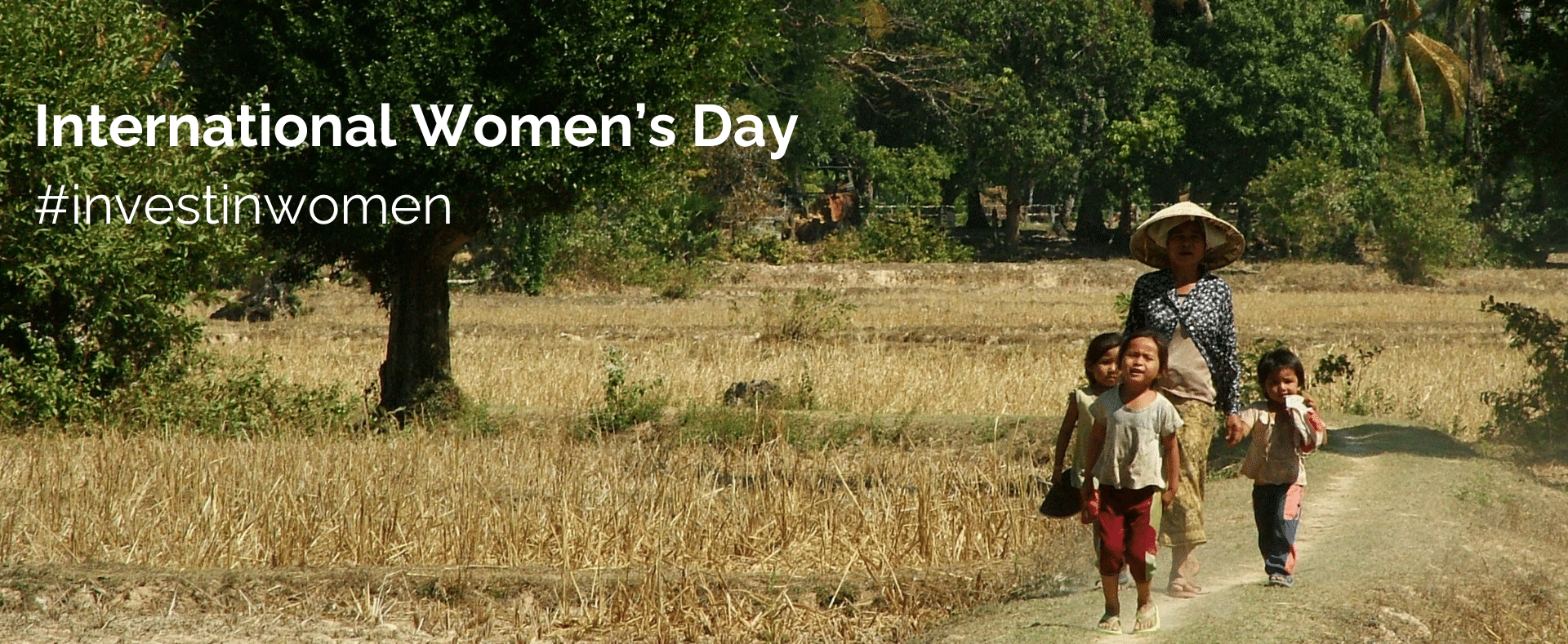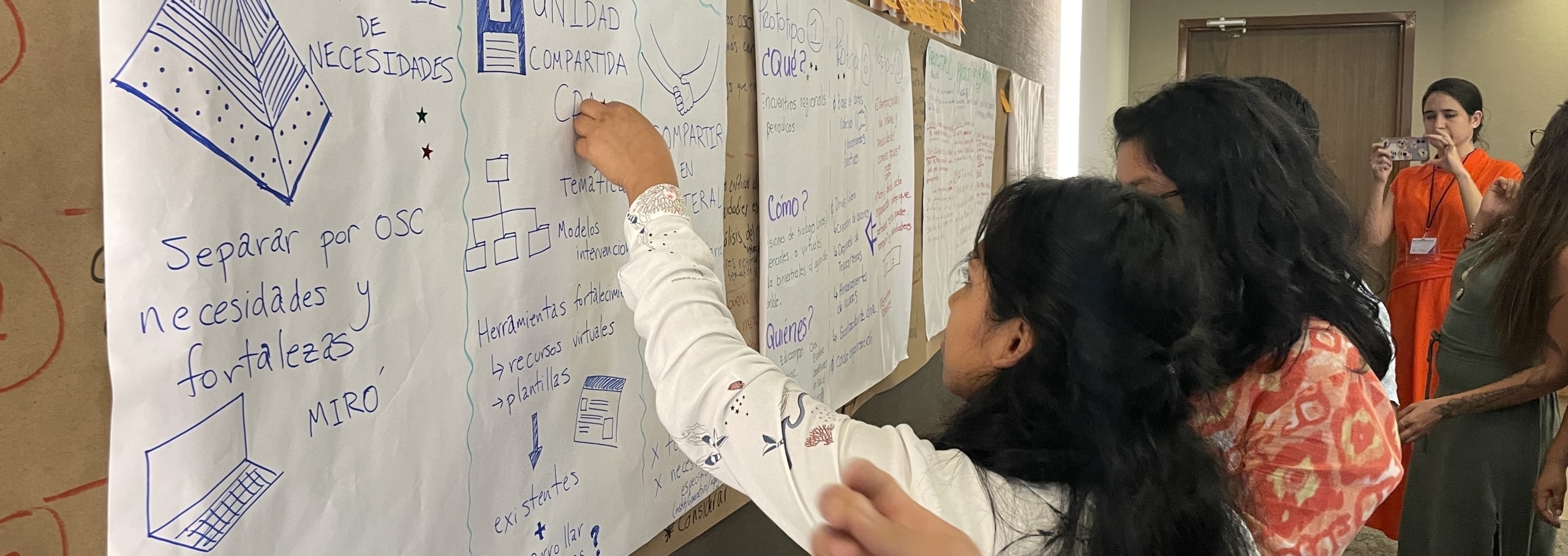To recognize Women’s History Month, Social Impact is highlighting three of our Chiefs of Party whose work typifies this year’s theme of “Women Who Advocate for Equity, Diversity, and Inclusion.” Fridays throughout March, we will showcase these remarkable individuals, offering a platform for them to share their perspectives and reflections on this important theme. Through insightful interviews, they will provide valuable insights into how they integrate the principles of equity, diversity, and inclusion into their leadership roles and daily work.
Monalisa Salib has been working in international development for the last 19 years. She joined Social Impact in 2020 and became Chief of Party for the USAID Learns contract in 2023. Monalisa shares the driving forces behind her career choices and insight into her advocacy for equity, diversity, and inclusion.
Question: Could you please provide some insights into your background and the factors that led you to your current role with Social Impact?
Monalisa: I’ve always worked in development. Years into my career I realized it was mostly because I didn’t want people to have to make the hard choices my parents made of whether to leave their home countries due to limited opportunities. Most of my career was focused on the Middle East and North Africa, where my family originates, but then I had one three-month assignment in 2019 in Vietnam, and my whole family fell in love with it. We wanted to find a way back. When the opportunity arose to join Social Impact originally as the CLA Director for USAID Learns, I jumped at the chance. Over the years, I changed positions to Deputy Chief of Party and eventually Chief of Party.
Q: What does it mean to you to be in a leadership position?
Being in leadership means that I’m in the business of creating other leaders and constantly challenging myself to be an even better leader, one I would choose to follow.
Being a Chief of Party, at my age and with my background is meaningful to me. Some days I thought I would never actually become the head of a program, so I’m grateful to be in this position and foster an environment for and with the team that is healthy and safe so we can do our best work.
Q: How do you “Inspire Inclusion” among your team? What are the challenges to doing so and how do you overcome them?
Big picture, we talk about what it means to be inclusive. We had a session on what diversity, equity, inclusion, and accessibility mean in the Vietnamese context. We also had gender and social inclusion training for the team so they could become aware of their mental models and challenge them where needed.
Little picture, it’s the small things day to day. In general, we are working in a relatively hierarchical and deferential culture in Hanoi, as compared to the development sector in the U.S., and I have to stay aware of the power differential between the team and me. I ask people what they think or if anyone has an alternative perspective we haven’t considered. We changed how we do our team meetings to avoid a few people dominating. Instead of having certain parts of the meeting in plenary, we encourage small groupings first so that everyone has a chance to share their key learning from the prior weeks. I try to model how to invite and keep voices in the conversation. I think a big part of this comes from my background in community development and facilitation. This is the mental model/frame of reference I come from in my workplace interactions.
Q: As a leader within SI, how do you perceive the significance of your position in advancing diversity, equity, and inclusion efforts within the organization and the community?
For those of us in formal leadership, we have to acknowledge and grapple with our formal power. Does it even need to be used? And when it does, are we using it wisely, justly, and kindly? I see my role as one of creating safe space for all team members, regardless of their background. My role is also to incentivize and encourage others to do the same so we are all in the constant business of improving the environment, making it more inclusive, safe, fun, and collaborative. We do this through the many rituals we have on our team – our connect and reflect sessions bi-monthly, the way we run our team meetings bi-weekly, the celebrations we choose to spend time on, and the collage we co-create in real-time in our office.
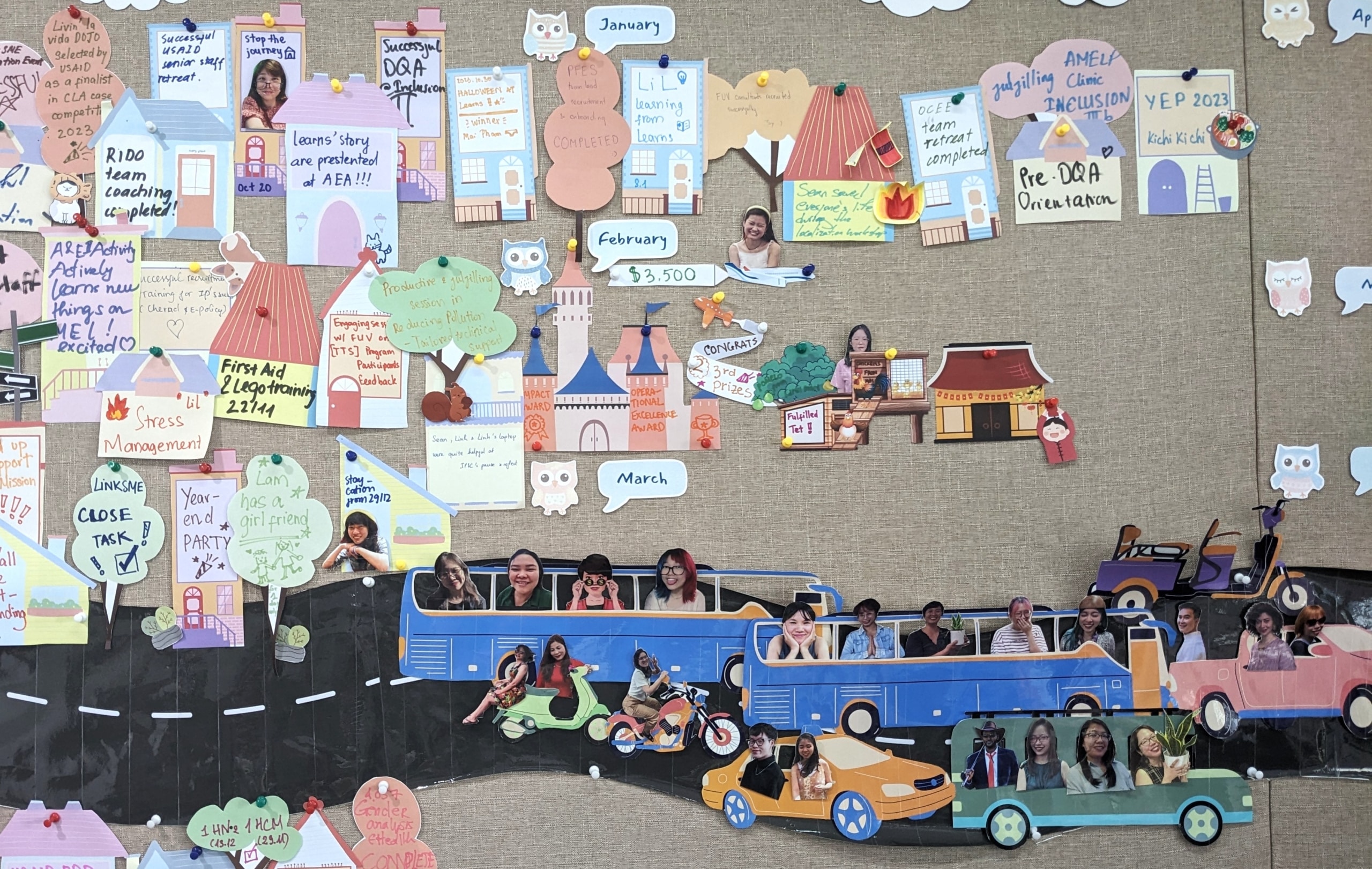
USAID Learns final year mural which gets updated in real-time. Team members are in the vehicles on the bottom right; our accomplishments are the houses and trees that make up the community, and the clouds are our hopes for the year.
I also think, as an outsider in Vietnam, I can use my voice to observe or ask questions about group dynamics that are different from my home cultures. This helps bring awareness to the staff that something they take as normal is, in fact, context-specific. It also helps me reflect on my original cultures and what I can “borrow” from Vietnamese culture that aligns with my values.
Q: We would love to hear about a project you’ve led at SI where you advocated for equity, diversity, and inclusion for women.
In Vietnam, we are supporting the USAID’s diversity, equity, inclusion, and accessibility (DEIA) efforts. I took the lead in managing this assignment and designed the scope of work with the Deputy Mission Director. We started with an analysis that asked the simple question of “what does DEIA mean in the Vietnam context?” We then facilitated focus group discussions with staff based on that learning to understand what resonated and get their input on what the Mission’s DEIA objectives should be. This is a work in progress, but it’s all about helping the Mission determine if its staff represent the diversity of Vietnam and promote an inclusive environment.
We also support USAID/Vietnam with its gender analyses for new activities. We engage the technical teams in the findings and, together, help identify ways they can incorporate gender and social inclusion considerations into solicitations. This demonstrates to implementing partners that gender and social inclusion are important to their proposals and eventual implementation, which hopefully increases the chances that marginalized groups are more meaningfully and equitable engaged in USAID programming.
Q: How do you advocate for women’s equity, diversity, and inclusion in your daily life, personally and professionally?
I was always the person in my family – from a young age – with a feminist radar on high alert, pointing out anything I thought was inappropriate. That radar remains alive and well today; I notice and discuss with team members when we see privilege or marginalization playing out in our work and what that means for us and those affected.
But the most important thing for me is to raise a feminist son. It’s eye-opening to see the world from the perspective of a child who doesn’t yet know the power dynamics that exist outside his family and in the world more generally. As he is getting older, we discuss how the world is experienced by different groups based on how they appear, whether that’s right, and what we can do about it. This feels like my life’s work in a way, the legacy I’ll pass on that will hopefully be passed to our descendants and have a small but positive ripple effect on our communities.
Q: Drawing from your experiences and path, what guidance would you offer to young women, particularly in navigating challenges related to diversity, equity, and inclusion?
I won’t sugarcoat it – I still think we have to work harder to achieve the same recognition or opportunity as men. But, do this on your terms whenever possible – make sure it’s something you genuinely care about, something you (perhaps uniquely) excel in, and something you’d be proud to tell your ancestors and descendants about.
Find your allies and support system. I still remember a group of women around my age when I first started my career and how much we supported each other mentally and emotionally. Whatever that group looks like for you, make sure you have one.
I also always tell young women, should they be interested in having a long-term relationship or marriage, children, etc., to choose their partners wisely. This is the single most important life decision. It’s much easier to achieve what you want in your career life if you have a feminist partner alongside for the ride.

